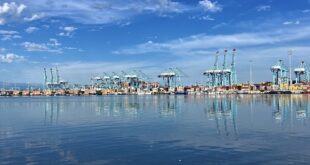Jordi Heu, the minister of industry, tourism and trade, said that all forecasts suggest that Spain could see new records in terms of tourism by 2025. This figure may reach 100 millions visitors. The challenge for this year is to increase revenue while avoiding saturation in cities and resort destinations.
Data released by the Ministry a couple of days ago showed that 2024 saw 94 millions foreign tourists visit Spain. That’s 10% more than in 2023, when 84million visitors were recorded. Tourists also spent a record amount: 122 billion euro in one year. This is 16% more than the 108 billion earned by the sector at the end 2023. The higher spending growth compared with the rise in tourists is due to higher prices and premium services.
Spain is experiencing a record number of tourists. Also, more tourists are choosing destinations other than the usual sunny beaches. Prices have risen due to the long-awaited deseasonalisation. The national association of hotels (Cehat), predicts a 5% increase in rates for the first quarter 2025. The accumulated rise of 35% in Spain since 2020 is now added to this figure. The average price of a room between January 2024 and November 2024 was 120 euros, compared with 90 euros during the same time period in 2019. This is according to data from the INE National Statistics Institute.
But price increases cannot be the only factor. Experts suggest that Spain should focus on high-end tourists to increase revenues (through luxurious hotels, shows and restaurants, increased shopping in stores, etc.). Instead of arrivals. Sustainability is the reason behind this. “Exponential growth in a destination as mature as our country is not only unsustainable, but would have unfavourable consequences, such as greater citizen disaffection, a negative environmental impact and even a worsening in the ability to offer a quality service,” said Germán Jiménez, director of Turium.
Last year, the number of tourists from the US and Mexico, Venezuela and Colombia, as well as Brazil, Colombia, and Venezuela increased, and so did consumption, spending, and interest in investing in Spain. However, Jiménez has stated that the tourism of excellence that Turium advocates goes beyond the origin of the visitor and focuses more on the typology. It is a tourist that respects their environment, appreciates its importance, and seeks authentic experiences. Travelling slowly, they seek to enhance their own experience and avoid crowds.
Madrid is the city that is benefiting the most from this type of long-haul tourism, but many cities in Andalucía, the Basque Country, the Balearic Islands and the Canary Islands have also reaped some benefits of the phenomena.
Competitive pricing
The INE statistics for 2024 show that Asian tourists grew most with 14.2% higher visitors than 2023. The US is now a significant source market, with 4.2 millions tourists, or 11.2% more than 2023.
In 2025, tourism will continue to grow. Caixabank Research estimated that the GDP of tourism will grow by 3,6% in 2020 (after growing by 6% in the previous year), exceeding the economic growth forecast by more than a point. Tourism will make up 13.2% in the total economy in 2025. It is at its highest ever level.
Economists believe that this growth has two solid foundations. One hand, the economic growth of the major markets is expected to increase this year and will lead to an increase in demand for international travel. On the other hand, the prices of tourism in Spain are significantly more flexible than the main competitors.
New trends include more foreigners and a longer peak season.
According to the SiteMinder hotel booking trends report 2025, a larger influx of international visitors, a longer high season, and more advanced bookings are among the trends that will shape travel in Spain in the next few years. According to the study, foreigners made up more than 60% hotel guests in 2024. Bookings increased despite an increase of 5% in hotel rates. The study shows that although August remains the busiest period in the country (accounting for 11% of all annual stays), businesses have also benefited from the increased arrivals of May and Oct. This has led to an extension of the peak seasons.
 Costa News Spain Breaking News | English News in Spain.
Costa News Spain Breaking News | English News in Spain.






